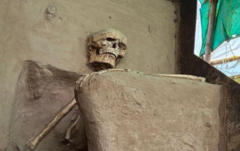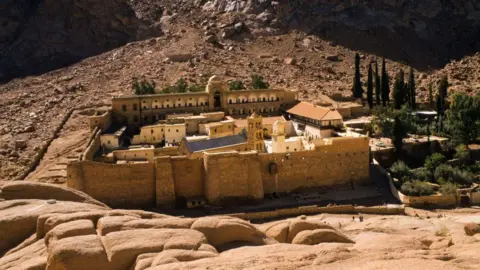A 1,000-year-old skeleton discovered in Vadnagar, India, is still in limbo without a dedicated museum space, six years after its excavation due to ongoing bureaucratic disputes. The remarkable finding, made by archaeologist Abhijit Ambekar and his team in 2019, features a human skeleton seated in a meditative position, a pose rarely seen at other archaeological sites in the country.
The skeleton was excavated from western Gujarat state by Dr. Ambekar, who noted the significance of the find, suggesting it likely dates back to the Solanki dynasty that reigned from 940 to 1300 CE. The intricately preserved remains have been placed in a makeshift shelter for the last six years due to disagreements among officials about the next steps for proper preservation and display.
Local and state officials have been wrangling over who should take ownership of the skeleton. While approximately 9,000 artifacts retrieved from Vadnagar have been successfully placed within museum walls, the skeleton remains precariously situated under a tarpaulin shelter, exposed to the elements and unprotected from vandalism.
"The skeleton is extremely valuable, offering insights not just into local history but into broader ancestral life. It's concerning that it still lacks a museum home," Dr. Ambekar remarked. The state’s Directorate of Archaeology and Museums indicates that the skeleton remains under the Archaeological Survey of India’s (ASI) care, complicating its eventual display.
Despite the site's historical significance and proximity to the new Archaeological Experiential Museum—built recently at a cost of $35 million—officials admit that the skeleton's absence from this facility is due to a procedural oversight in transferring ownership. Meanwhile, locals express frustration over governmental delays and the precarious state of their town’s archaeological gem, which they believe could attract tourists globally.
The skeleton could also inform the study of "samadhi burials," a burial method seen among Hindus where revered individuals were interred, highlighting the cemetery's cultural dimensions. As ongoing debates continue regarding its fate, both Dr. Ambekar and Vadnagar residents hope for prompt action to provide the skeleton with the respect and secure environment it warrants while contributing to the rich tapestry of Indian history.





















